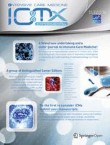Angiotensin-(1–7) exerts a protective action in a rat model of ventilator-induced diaphragmatic dysfunction
Ventilator-induced diaphragmatic dysfunction (VIDD) is a common event during mechanical ventilation (MV) leading to rapid muscular atrophy and contractile dysfunction. Recent data show that renin-angiotensin s...
